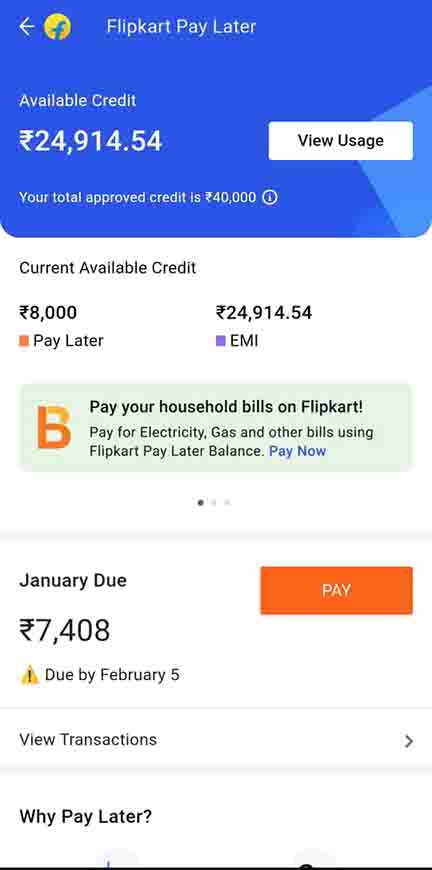Exploring Peer-to-Peer Lending in India: Empowering Borrowers and Investors
What is P2P Lending India? : In recent years, the financial landscape in India has witnessed a significant transformation, largely driven by advancements in technology and changing consumer preferences. One such evolution that has gained traction is Peer-to-Peer (P2P) lending. P2P lending is a digital platform that connects borrowers directly with individual investors, bypassing traditional financial institutions. In this article, we will dive into the world of P2P lending in India, understanding its mechanics, benefits, risks, and its role in shaping the lending ecosystem.
Understanding P2P Lending
Peer-to-Peer lending, often referred to as P2P lending or marketplace lending, is a form of lending that brings together borrowers and lenders through an online platform. The central idea is to facilitate lending transactions between individuals without the involvement of traditional financial intermediaries, such as banks or credit unions. P2P lending platforms serve as intermediaries, providing a virtual space for borrowers to request loans and investors to fund these loans in exchange for interest.
Mobikwik Xtra – P2P Lending Platform : Earn 12%
- Flexi plan: This plan offers interest up to 12% p.a. and no lock-in period. You can withdraw your investment at any time without any penalty.
- Plus plan: This plan offers interest up to 12.99% p.a. and a lock-in period of 3, 6, 9, or 12 months. If you withdraw your investment before the lock-in period, you may have to pay a penalty.
Referral Code : QVH2UW
How P2P Lending Works
- Borrower Application: Individuals seeking loans apply on P2P lending platforms by providing their personal and financial information. This information is used to assess the borrower’s creditworthiness and assign a risk profile.
- Lender wp-signup.php: Investors looking to lend their funds register on the platform. They can choose the amount they want to lend and the type of borrowers they want to lend to based on risk factors.
- Loan Listings: Once a borrower’s application is approved, their loan request is listed on the platform. Investors can browse through various loan listings, each containing details about the borrower, loan amount, interest rate, and risk assessment.
- Investor Participation: Investors can choose to fund a portion of a borrower’s loan request. Since multiple investors can contribute to a single loan, this diversifies the investment risk for each lender.
- Loan Disbursement: Once the required funds are raised from multiple investors, the loan is disbursed to the borrower. The borrower then repays the loan in regular installments, which include both the principal and interest.
- Repayment and Returns: As borrowers repay their loans, investors receive their principal amount along with the interest earned. P2P lending platforms typically manage the repayment process, ensuring timely collection from borrowers and distribution to investors.
Benefits of P2P Lending in India
- Access to Credit: P2P lending opens up borrowing opportunities for individuals who might not meet the stringent criteria of traditional banks. It provides an alternative source of credit, especially for those without a credit history or with limited access to formal financial institutions.
- Higher Returns for Investors: Investors in P2P lending can potentially earn higher returns compared to traditional savings accounts or fixed deposits. By directly lending to borrowers, investors can negotiate interest rates and terms that align with their financial goals.
- Diversification: P2P lending allows investors to diversify their investment portfolio by lending small amounts to multiple borrowers. This diversification spreads the risk and reduces the impact of default by a single borrower.
- Transparency: P2P lending platforms provide transparency by sharing detailed borrower information, risk assessment, and historical platform performance. This transparency empowers investors to make informed lending decisions.
- Efficiency: P2P lending platforms leverage technology to streamline the lending process, reducing administrative overhead and offering borrowers and investors a convenient online platform to interact.
Risks and Challenges
- Credit Risk: Since P2P lending involves lending to individuals without the strict credit checks of traditional banks, there is a risk of default. Investors must carefully assess the risk profile of borrowers before investing.
- Regulatory Environment: The regulatory landscape for P2P lending in India has evolved over time. It’s important for both borrowers and investors to be aware of the regulations governing P2P lending and the legitimacy of the platforms they engage with.
- Lack of Collateral: Unlike traditional loans, P2P loans might not always be backed by collateral. This can lead to challenges in recovering funds in case of default.
- Marketplace Risk: P2P lending platforms act as intermediaries, and the success and credibility of these platforms can impact the overall experience for both borrowers and lenders.
- Limited Information: Borrowers and lenders might have limited information about each other beyond what is provided on the platform. This can make it challenging to assess the credibility and reliability of the counterparty.
List of Peer-to-Peer (P2P) lending platforms
Here is a list of 10 Peer-to-Peer (P2P) lending platforms in India:
- Faircent:
- Website: Faircent
- Lendbox:
- Website: Lendbox
- i2iFunding:
- Website: i2iFunding
- LenDenClub:
- Website: LenDenClub
- IndiaMoneyMart:
- Website: IndiaMoneyMart
- RupeeCircle:
- Website: RupeeCircle
- Cashkumar:
- Website: Cashkumar
- PaisaDukan:
- Website: PaisaDukan
- Monexo:
- Website: Monexo
- Loantap:
- Website: Loantap
The Evolution of P2P Lending in India
P2P lending emerged in India as an innovative solution to address the credit gap for small businesses and individuals. The Reserve Bank of India (RBI) recognized the potential of P2P lending in enhancing financial inclusion while acknowledging the need for regulatory oversight. In 2017, the RBI classified P2P lending platforms as Non-Banking Financial Companies (NBFC-P2P) and laid down guidelines to ensure the stability and credibility of the industry.
These regulations imposed limits on borrowing and lending, required proper due diligence on borrowers, and mandated platforms to provide transparent information to users. The regulatory framework aimed to strike a balance between supporting innovation and protecting the interests of borrowers and investors.
Related Articles
Conclusion
Peer-to-Peer lending has transformed the lending landscape in India by providing an alternative source of credit and investment. It offers borrowers increased access to funds and investors a chance to diversify their portfolios and potentially earn higher returns. However, like any financial endeavor, P2P lending comes with its own set of risks and challenges, primarily centered around credit risk and regulatory considerations.
As P2P lending continues to evolve and mature within the regulatory framework, it presents an intriguing option for individuals seeking loans and investors looking to earn returns beyond traditional financial instruments. With careful research, due diligence, and a thorough understanding of the risks and benefits, participants in P2P lending can navigate this innovative space while contributing to the growth of the digital lending ecosystem in India.


